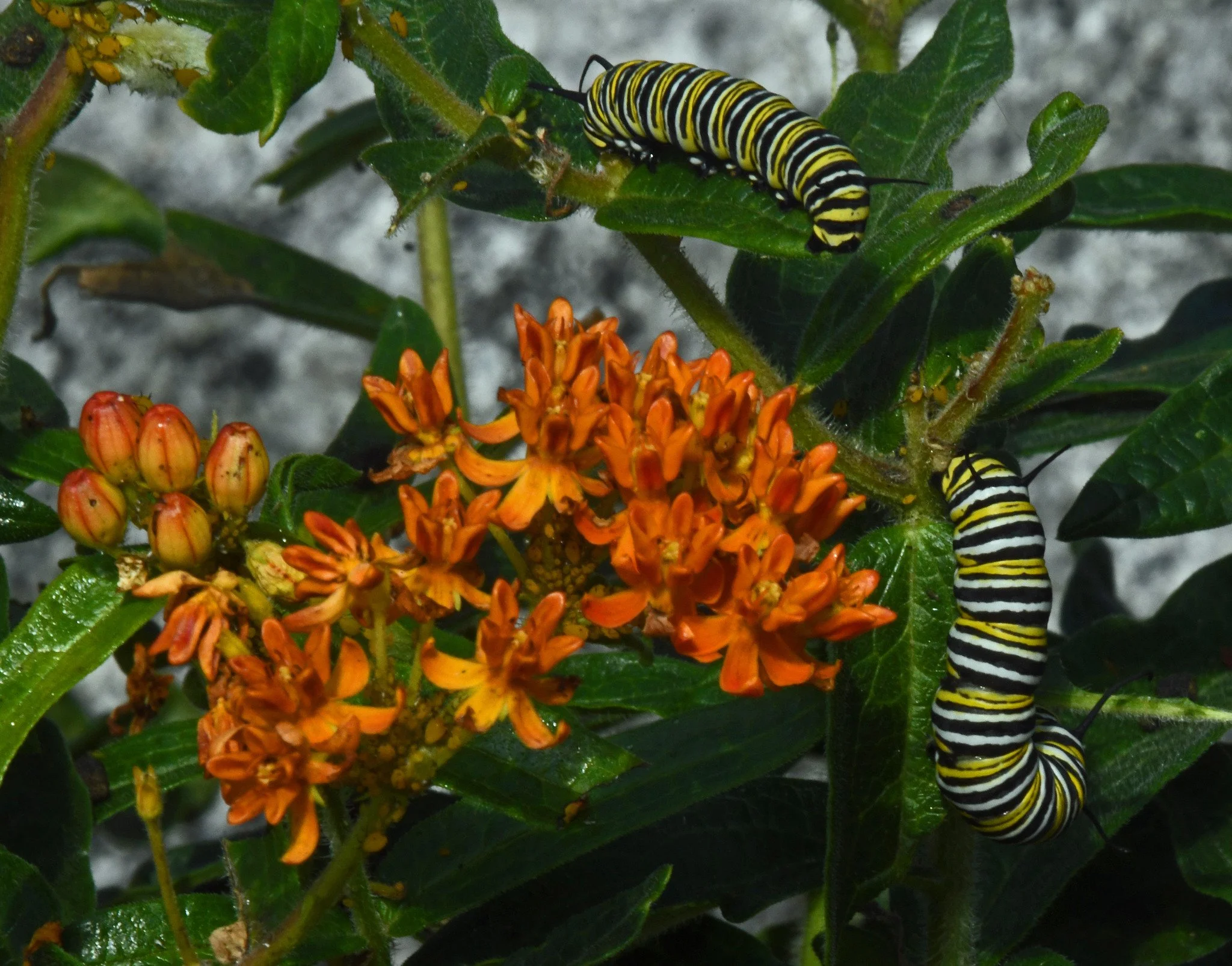We have at least seven monarch caterpillars now munching our cultivated butterfly weed (Asclepias tuberosa), a milkweed plant that once was native to Maine, but now is listed by the state as “Potentially Extirpated.” Can yiou find at least five caterpillars in this image taken the same day on a different part of the bush?:
Answer Below
The monarch butterfly migration here usually starts in late August and September, so these little crawlies are late coming to the party. I hope that they can metamorphose into migrator butterflies and build up flight energy so they get out of Dodge before significant freezing starts here.
Fortunately, these cats grow extremely fast, taking about 9 to 14 days to develop from an egg to fully-developed caterpillar capable of transforming itself, according to the literature. In that process, they reportedly increase in size about 2000 to 3000 times during five growth stages, shedding their skins as they grow.
Given the date, these cats – if they survive – almost certainly will be in the migrating monarch butterfly generation, the last generation of monarch butterflies here in the year. The migrators are a “super generation” that mysteriously is born with special characteristics that allow them to live up to nine months, rather than the usual two to six weeks. The extra time and perhaps genetic variations allow them to complete the treacherous journey from Maine to Mexico, where the survivors usually arrive by early November. Those migrators will breed and die in Mexico and a new generation will start to migrate north in March.
It’s an incredible phenomenon for any species, no less one that is lighter than a feather and usually has a wingspan that is less than the width of a standard playing card. They travel up to 3000 miles by instinct and physical forces that we don’t understand fully yet.
(Images taken in Brooklin, Maine, on September 14 and 15, 2025.)


